Ereban: Shadow Legacy is a well-designed, fast-paced stealth action game that offers a unique story setting. The game allows players to take on the role of an assassin of the shadows to utilize the sci-fi environment’s surroundings to infiltrate the diverse world.
Unlike most games that focus on a linear approach, Ereban: Shadow Legacy nails a unique mechanic by offering a choice of kill or spare enemies. The game gives complete freedom to players to tailor the gameplay according to their choice. To learn more about these mechanics, we interviewed Alex Márquez, Creative Director of Ereban: Shadow Legacy, over email.
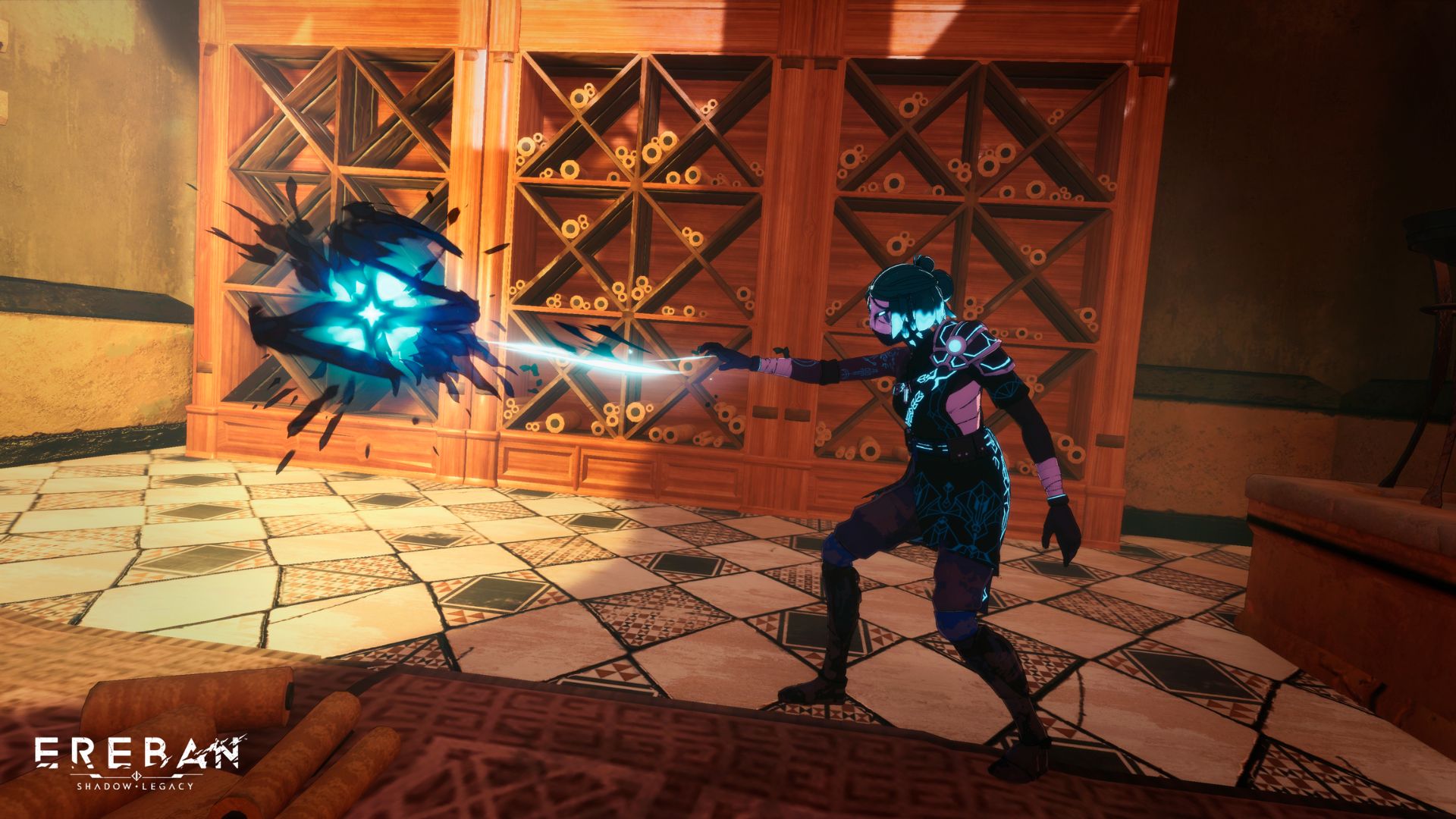
Alex: Hey there! My name’s Alex Márquez, and I’m the Creative Director of Ereban: Shadow Legacy. This game is, for me (and for the majority of the team), our first professional game. As part of a small indie team, I’ve worn many hats, but mostly I’ve been focused on ensuring every element of the game maintained a cohesive vision when put together. Apart from that, my main tasks have been designing the game and some of the levels!
Alex: This game’s conceptualization began through the main mechanic, the Shadow Merge. This ability allows Ayana, our main character, to become one with the shadows and move freely through them. As long as you don’t touch a light (or run out of stamina), you can move unseen without making noise, climb walls, and pass through small spaces… So, with this in mind, we wanted to present this opposition between light and shadow in the world itself, and that’s its origin. Helios, an energy megacorporation, is ruling the world after saving it from an energy crisis, whereas you are the last descendant of this ancestral race with shadow powers, investigating what happened to your people and how they are related.
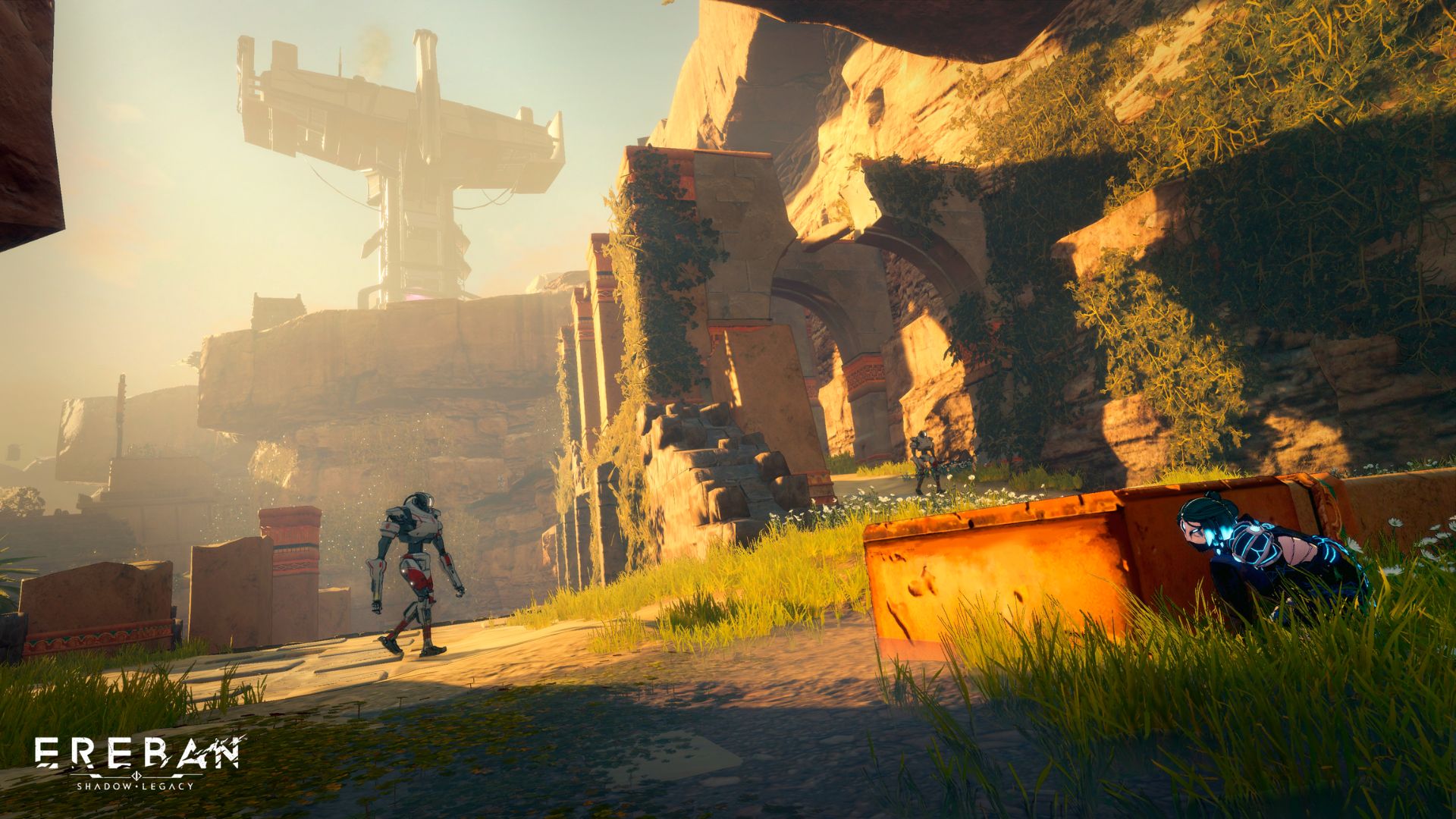
Alex: For me, that’s one of the most appealing aspects of stealth games, being able to play my way. On one hand, avoiding all enemies means you aim to infiltrate the enemy’s lines without being seen or heard. Achieving that is such a powerful feeling. However, it’s a difficult path, as there are points in which you are surrounded by enemies and have to be super careful. I really enjoy the tension when that happens. On the other hand, being able to kill every enemy one by one until you are the only one left is another different, awesome feeling. Sometimes, it makes it easier, as you are eliminating threats little by little, but you are forced to come closer to the danger, and you also need to take into account that enemies can see their comrades’ bodies. So it’s a way to let players play their way and experience these two different but great feelings. In my case, I usually go towards the ghost route, but for example, in Ereban, there’s a medal at the end of each chapter for not killing any enemy and another one for neutralizing every robot, and getting both by replaying the level allows you to experiment with new mechanics and situations.
Alex: It’s been an iterative process. When designing the Shadow Merge, we started to see all the possibilities it opened to stealth and a very dynamic traversal and how they could be combined to create a fast-paced stealth game. We designed each level (or chapter) with this in mind, trying to provide a different experience from one to another but keeping core elements in common, like always having multiple ways to reach your objectives using shadows. So, for example, there’s one level, which is almost a mini-open world, while another, which is pretty much linear, focuses a lot on shadow puzzles. And then, it involved a lot of playtesting to ensure navigation was smooth and to enable those paths that players tried by forcing or disabling those that could break things.
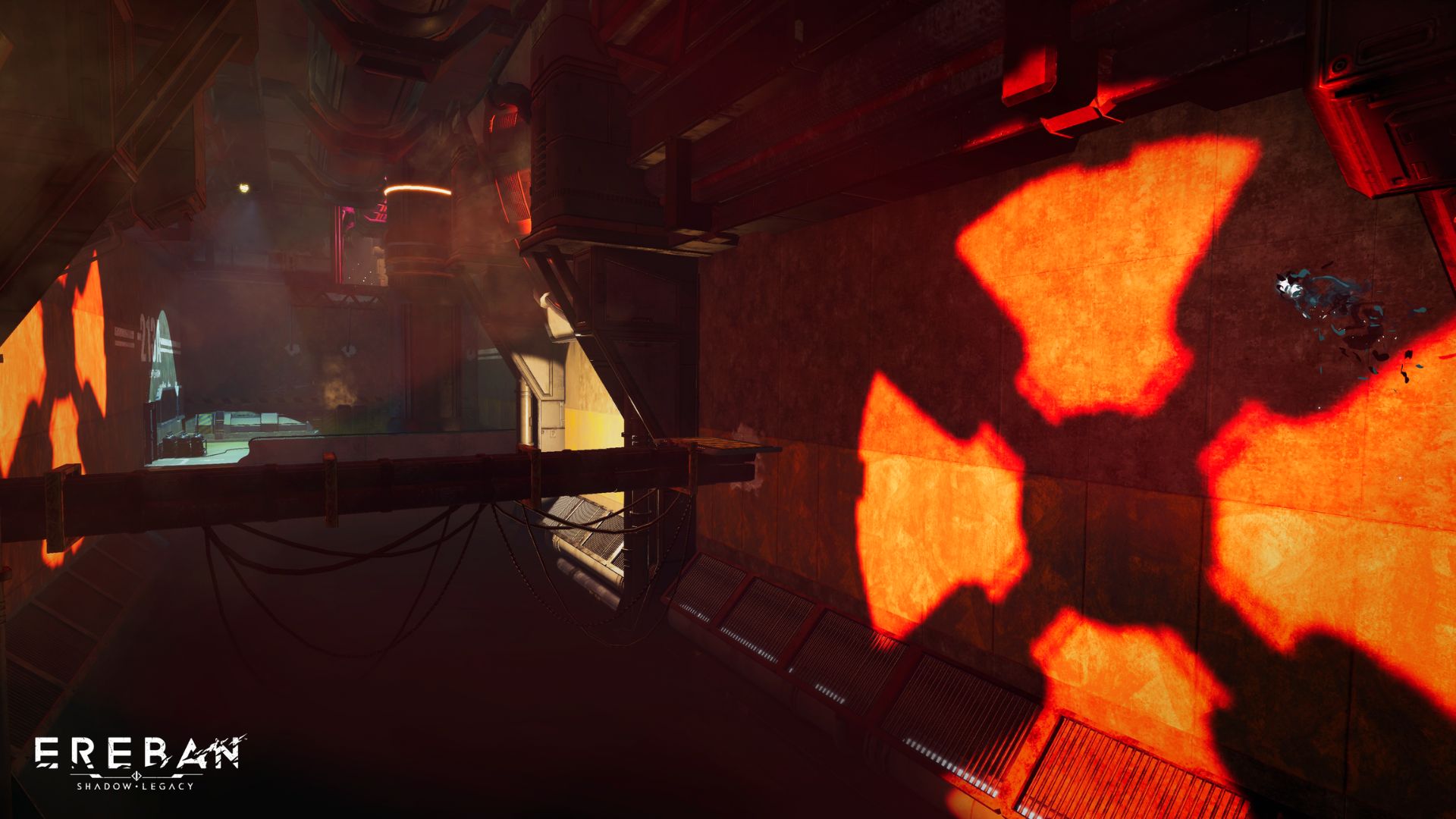
Alex: As a small team, we couldn’t afford to make a wide variety of enemies, so we had to be clever and get the most out of our resources. On one side, we have the SYMs. As you say, these are inorganic robots, and there are 4 variants of them. There’s the base model, equipped with lights and focused on melee; the upgraded model, which can revive fallen robots; the stealth one, equipped with optical camouflage; and the sniper, a long-range enemy. Being a robot means that you can be lethal or non-lethal without any type of remorse, so you can experience both gameplays I described before. On the other side, we have the workers. They are not enemies per se, as they won’t attack you. They are just humans earning a salary working for a megacorporation. However, they are scared of you; as for them, you are a terrorist, so if they see you, they will raise the alarm. What also makes them interesting is that if you kill them, you’ll absorb their pneumas and gain more shadow power to stay longer in Shadow Merge. By doing this, we wanted to raise the following question: Are you a pragmatic person who, to defeat your enemy, will kill anyone who stands in your way, become more powerful, and eliminate threats? Or do you prefer to struggle more if that means you won’t murder innocent people? As the last of the Ereban, that’s essentially what Ayana (and therefore the players) has to decide, as well as the legacy she will define at the end of the adventure.
Alex: I think that what makes Ereban: Shadow Legacy unique is the Shadow Merge mechanic, as it opens lots of possibilities for movement and stealth. Traditionally, stealth games encourage players to hide in the shadows, but with this ability, you can literally become one with the shadows. The versatility and power of this ability, combined with the rest of the powers and gadgets you can learn and craft during this adventure, is such a rush. I always love when people start playing the game, as they play in a very conventional way, and how little by little they start internalizing this mechanic, reading better and better the shadows and the ways they open, until they become a deadly shadow or move completely undetected (depending on their playstyle). For me, that progression is such a great experience.
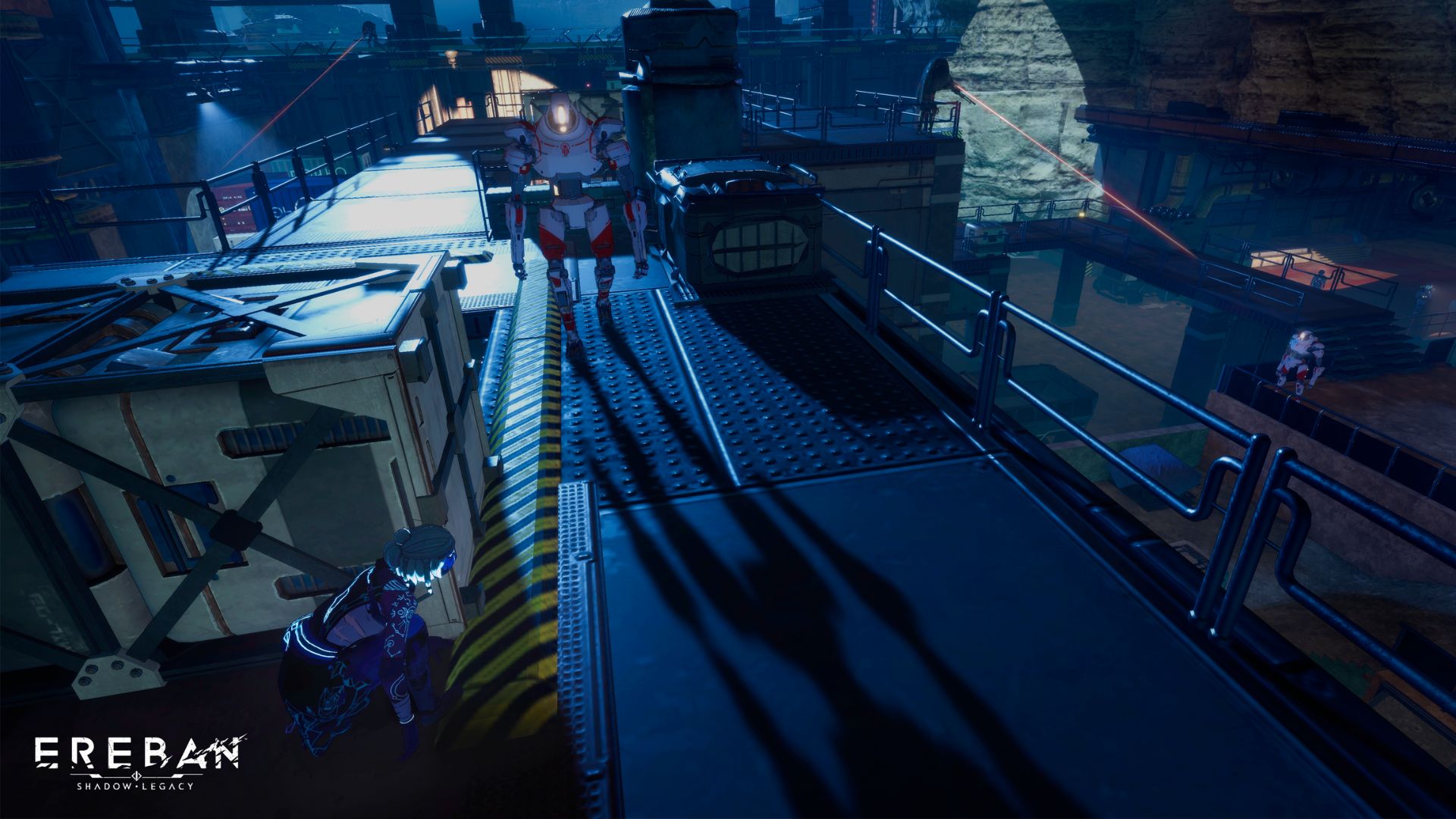
Alex: We think this universe still has a lot of potential, as even during development we came up with lots of ideas and possibilities we could do for a potential future, and we’d love to explore them in a sequel or spin-off. Unfortunately, our industry is not at its best right now, and as a small indie team, we don’t have the resources to face another development like this one. I hope we can come back to this in the future. In the meantime, while we are exploring what to do next, we plan to keep supporting the game, fixing bugs, and doing some free updates.
Alex: We’ve been working on Ereban: Shadow Legacy for about 5 years. In the beginning, there were only 6 people, and when we got funding, we grew to the 10 people we are now. But many more people have worked in the game, such as outsourced or additional devs, voice actors, audio people, and devs from services like QA or localization. This game has only been possible thanks to every single one of them.
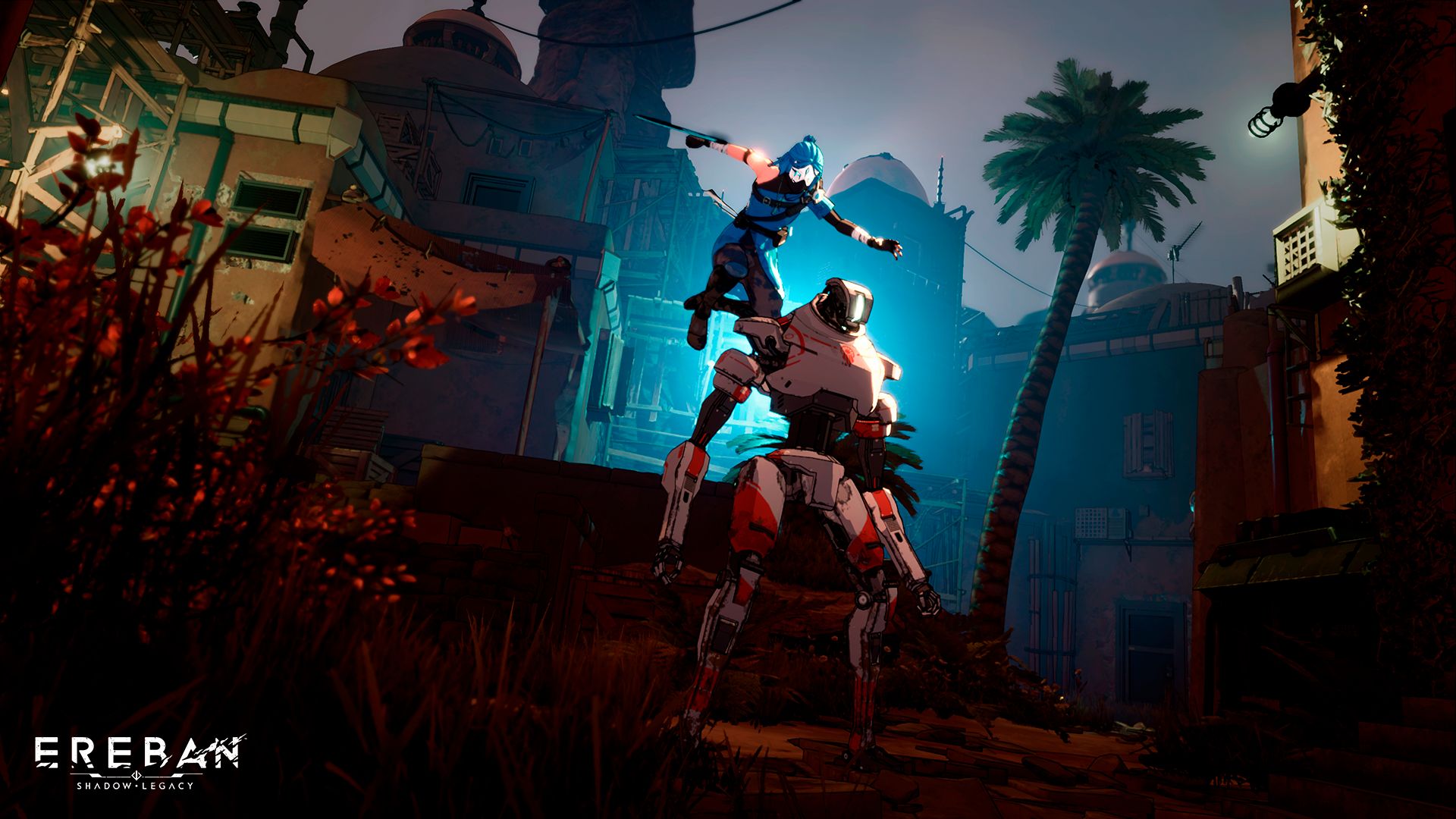
Alex: With no doubt, the biggest one was developing our main mechanic, the Shadow Merge. From the technical point of view, we had to develop a reliable shadow detection system, which implies there had to be lots of lights (one of the most demanding things in terms of performance), and on top of that, they had to be calculated dynamically, because you can also use the shadows of moving objects. Also, the movement itself and the camera were super challenging to develop, as you, as a player, can navigate on any surface that has shadows on it. Then, from the artistic point of view, we had to create organic and believable scenarios, complex enough to be appealing but simple enough to make sure the Shadow Merge works well on those surfaces. And we had to fake the lightning so you could distinguish exactly what’s light and what’s shadow at first sight. Then, from the design and level design points of view, we had to create systems and rules that allowed players to feel free and powerful to navigate the levels, with multiple ways to reach their objectives, while making sure to respect the technical constraints. Besides, we had to take into account that every object placed in the level that casts a shadow could be a potential path for the player. We even had to develop techniques and ways to guide the player, as developers traditionally use lights, but we had to use shadows. There were, of course, other challenges, but definitely, this was the biggest one. But in the end, we think it was worth the effort. Even today, with thousands of hours played, I still really enjoy turning on the game and navigating the shadows.
Alex: One of our top priorities is to ensure compatibility with the Steam Deck since it’s already running quite well, and only a few tweaks are missing. Then, we are working on adding difficulty settings, as we want to provide a bigger challenge to players experienced in stealth games while also being able to be more accessible to newcomers. We can’t promise anything yet as our resources are very limited, but we’ll do our best to try bringing Ereban: Shadow Legacy to Xbox and other platforms.
Ereban: Shadow Legacy is a Stealth-Action Platformer game developed and published by Baby Robot Games. The game was released on April 10, 2024 on PC.
Good job! Please give your positive feedback 😏
How could we improve this post? Please Help us. 💡
Nauman Shah is a VeryAli’s Guide Writer. With a background in Software Engineering along with immense love for video games and three years in Unity 3D games development, Nauman joined the writing media to share his thoughts around the world. Moreover, he likes to smash people with difficult questions on social media and watch shows with a cat named ‘Blep’.
Nauman primarily plays RPG and Open World Games – His Gamer Tag is #Sammich. You can check his gaming library and connect with him!



